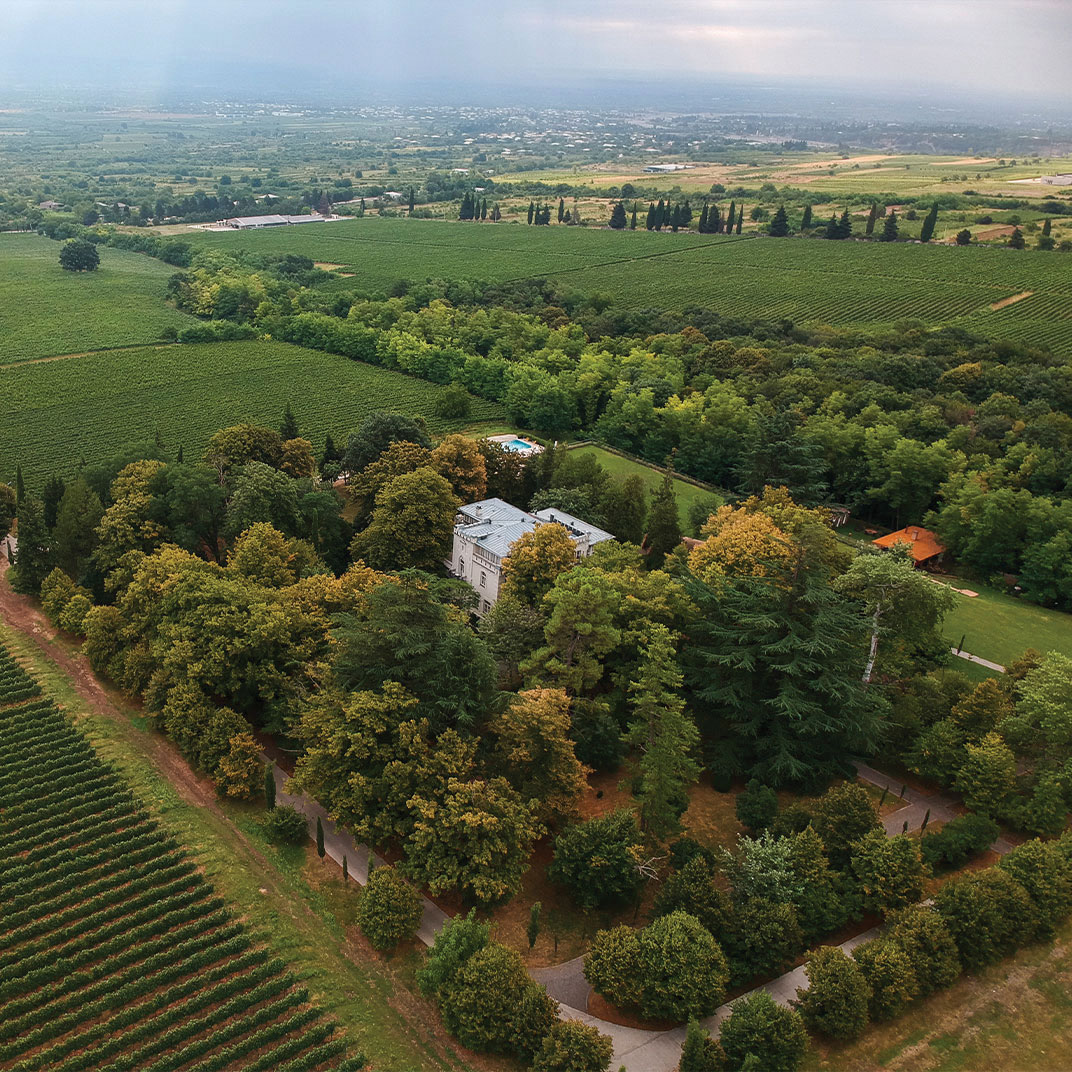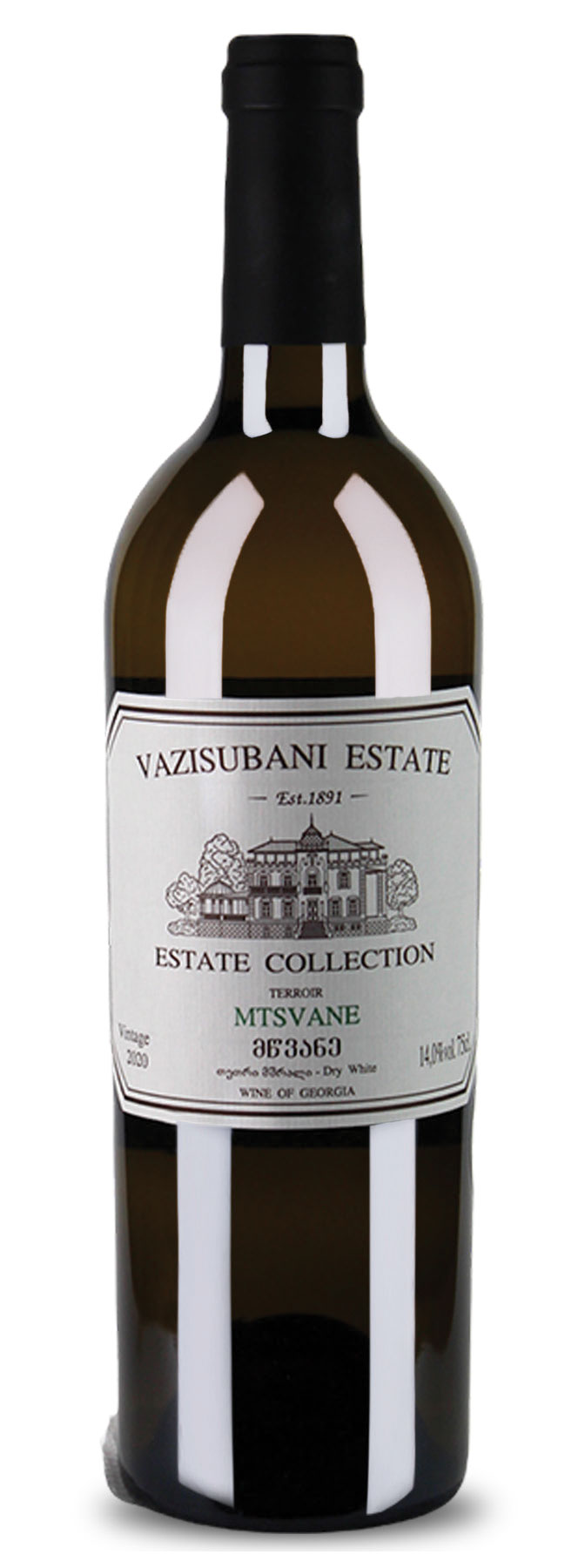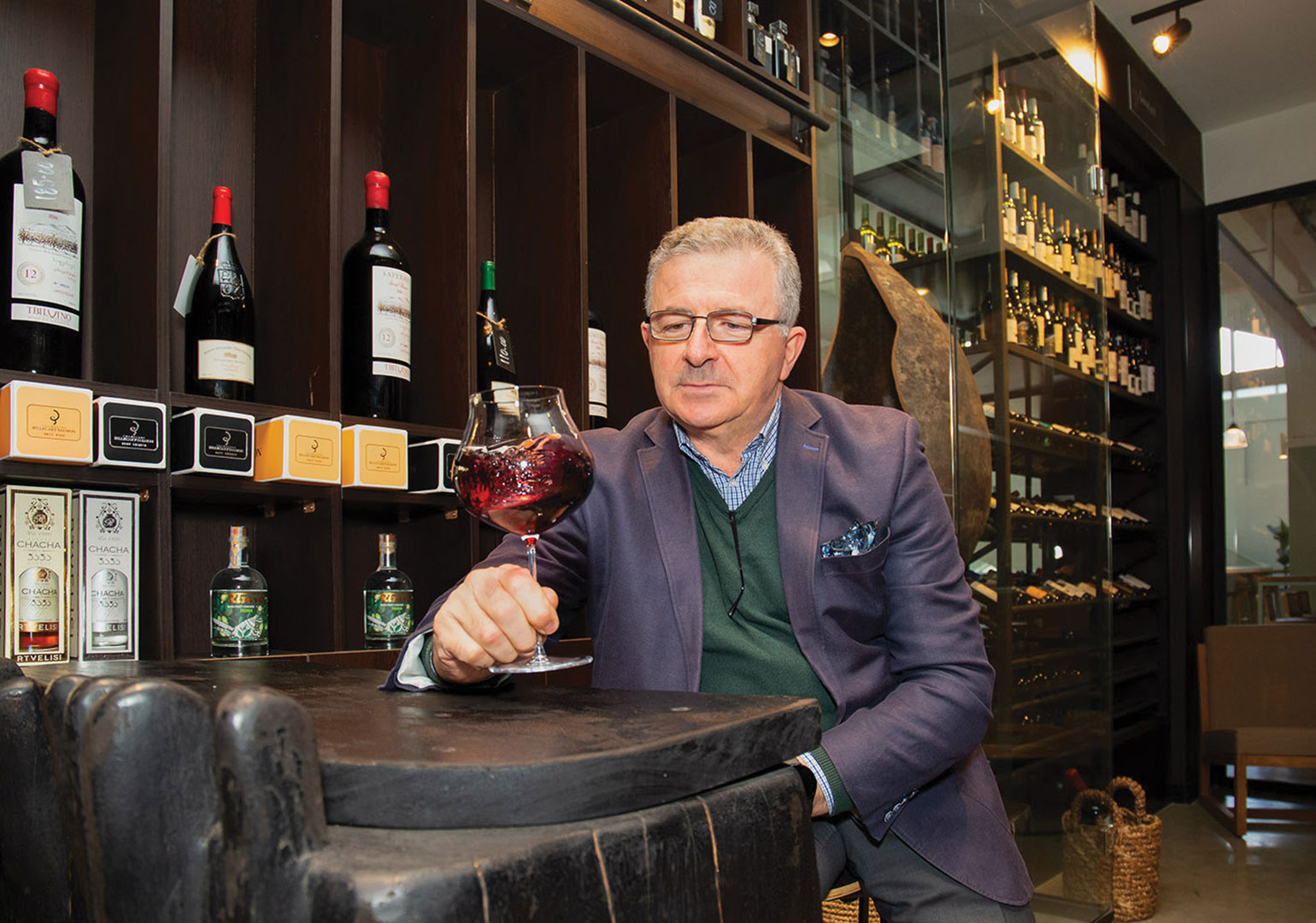Lado Uzunashvili, chief winemaker for Vazisubani Estate, sees global interest
in the wines of Georgia because of their unique varietals and methods.
As one of the world’s oldest wine-producing regions, Georgia, like all countries under Soviet domination, suffered a devastating demise in viticulture. Today, however, the country has not only revamped its vineyards but is producing wines that can compete in a global market. I interviewed Lado Uzunashvili, chief winemaker for Vazisubani Estate, on the current state of the industry in Georgia.
When did winemaking first begin in Georgia? What does “qvevri” mean? Is it still used?
The scientific evidence says that Georgia is the birthplace of Vitis Vinifera, the grape family on which the modern international wine industry stands firm. The evidence also indicates that we have the Western Georgian origin as well as the Eastern Georgian Origin of Vitis Vinifera from the same period in history, thus proving that there was no opportunity for these species to be introduced to our country from other sites. Furthermore, the latest article makes Israel (and the wider area of Levant) our contemporary partner, for that period of time, in the adaptation of Vitis Vinifera 9,000 years ago. With the increased popularity and demand of wine, large ceramic vessels called qvevri also must have grown. To keep them intact, and otherwise save them from collapsing under their own weight, qvevris were put into the ground; you could hide your wine from intruders, which our country has had in great numbers. The process has survived for 8,000 years and is still used today on an even bigger scale than perhaps any other time before, due to the increasing popularity of the wine made in qvevri, as well as increasing popularity of Georgia as a destination for unique wine and tremendously diverse and delicious cuisine.
We have 525 native varieties still surviving the test of history. Out of this, to my best knowledge, up to 70 now are commercially grown, while we add more to the list. Names are really new to the world and in some cases need huge efforts to memorize and even more to pronounce them, for example, Saperavi, Saperavi Budeshuri, Shavkapito, Otskhanuri Sapere, Tavkveri, Tamaris Vazi, Simoaseuli for reds; and Rkatsiteli, Mtsvane, Khikhvi, Kisi, Mstvivani, Grdzelmtevana, etc. for whites.
Can you give me the background on Vazisubani Estate?
In the 1800s, this splendid estate belonged to a renowned nobleman, Sulkhan Chavchavadze. A pioneer in winemaking, he built the estate and vineyards in 1891. His contribution to the cultural and educational development in Georgia, particularly Kakheti, is paramount. With time Chavchavadze’s once-prosperous palace and vineyards deteriorated. In 2013 the visionaries behind Vazisubani Estate took it in their hands to revive the derelict estate and transform it into an iconic destination rooted in its rich history, uninterrupted winemaking tradition, exceptional cuisine and outstanding hospitality. With that in mind, the vineyards were replanted, and an old wine cellar was restored. The palace was renovated and now is a 19-room exquisite boutique hotel.

What happened when the Soviets took over?
With the invasion of Soviet Russia in 1921, first they destroyed the family, even the family dog. Today we have no traces of the family burial site. The estate was then changed into a varietal collection field under the newly created Research Institute of Viticulture and Winemaking during that notorious time. This lasted 77 years. With the collapse of the USSR, it was privatized and then re-sold to the current owners in 2014. This is the year when its new and impressive life starts.
When were the vineyards restored?
We immediately cleaned badly maintained remains of the vines and we replanted them in 2015 and 2016, covering the total of 33 hectares under 6 varieties:
- Saperavi and Saperavi Budeshuri reds, considered the future of red wines not only in Georgia.
- Rkatsiteli, Mtsvane, Khikhvi and Kisi, the best known leaders, as well as the most adapted to the area.
For example, Rkatsiteli and Mtsvane are essentials for the local Controlled Appellation of Origin. Now we have a perfect local, aboriginal tool to deliver the most authentic wines the way we have done it for the last 8,000 years, as well as to give the international modern-style wines from the same varieties. In doing so we use our qvevri cellar and the state-of-art winery, which we built in 2020.
How has it been developed for tourism?
Ideally located at the foothills of the Caucasian Mountain range within a 2-hour drive from the capital, Vazisubani Estate is surrounded by vineyards stretched over 33 hectares and a magnificent parkland, home to some of the oldest and rarest tree species. Since 2014 we have been creating a place, a home away from home, where people come to relive the history, savor the estate wine, reconnect with nature and one’s self, celebrate life and be part of a memorable experience.
What are the current different labels (categories)?
The company produces three product lines:
- Traditional qvevri wines under Vazisubani Estate;
- Modern style wines under Estate Collection;
- Unique blends that are unusual to the industry under Georgian Sun.
To where are they exported, and how much of the wine remains in Georgia?
Wines of Vazisubani Estate are exported to 22 countries—from Brazil to USA and Canada, from the UK to Baltics across the EU, also to some other former USSR countries and finally in the Far East, Japan and China. We sell 60% of our 200,000-bottle production abroad, while offering only the remaining 40% locally. Georgia is a small country for bottled wine sales. It becomes even smaller if we take into consideration the fact of how Georgians see the wine phenomenon: “The wine I make is the best of all.” Thus, most people, who have even a slight link to grapes, or have such an interest, make their own wine for home consumption. It is worth mentioning that we observe Georgia’s genetic, inherited love to guests behind this. They must serve guests wine, as they think guests represent the gods themselves. Although this has changed into modern perceptions, they are still happy to use this tradition to make life cheerful and beautiful.

How has the war in Ukraine affected the estate?
The war in Ukraine affected all sides of our lives, naturally. The estate is not an exception. What we observe is the changing demography of the visitors, as well as the changing numbers of them. Geography of our sales has been very diverse. War in Ukraine tells us to diversify our markets even further, accentuating on the Western and Asian markets.
The demand on Georgian wine is increasing everywhere in the world, and this is giving us a very good chance to supply more since the image of our wines is very high.
The website WINESGEORGIA.com says there are now 100,000+ family wineries in Georgia as of 2019. What allowed this huge growth to happen?
The answer is so very short. It is the wine culture which is sitting in our genes historically that allowed this huge growth to happen. That number does not necessarily refer to wineries but to family cellars, which is a very familiar phenomenon to our country. The growth is also seen thanks to the easing regulations for the small players to come into the game, thus the government helping this part of our life to become as strong as it historically deserves.
What are the prospects for increased production?
We have reached 200,000-bottle sales last year and still have a capacity of 150,000 additional bottles to produce, thanks to the production potential of our vineyards.
At a time when the global market is flooded with wine, how can Georgia make progress in the international marketplace?
I think Georgia is a unique case and this is what attracts people to our wines. When we say:

- Our qvevri is 8,000 years old with its unbroken tradition recognized by UNESCO as Intangible Cultural Heritage of Humanity;
- We have 525 aboriginal grape varieties (down from 1,400) in this tiny country;
- We are recognized as the birthplace of the first cultured grapevine—Vitis Vinifera, the base of the modern wine industry of the world.
All these things drive people’s emotions very deeply. Immediately you have friends for life. They want to hear all these unusual stories about how essential grapes and grape products are for our lifestyle for all these millennia. We make not only wine from grape juice, but also an array of other delicious products which are full of nutrition for energizing the human body.
How has climate change affected the wineries?
As you may imagine, we are also affected by the changing climate. As elsewhere in the world, descriptives for our Controlled Appellation Zones are changing, and this is a big dilemma for the producers to persuade buyers. However, more and more people understand that it is inevitable and we have to face this change. Nature dictates! We can only study its new ways of behavior and in the best case scenario, manage to adapt to its demands. Though, so far, we look a lot better than other wine regions, for example, famous France. Our varieties with their oldest genes show exceptional adaptability. While talking to our colleagues in other countries, we jointly think that, for example, Saperavi (red) can save many regions of the world by replanting vineyards, or using it as a powerful blending tool next to their current varieties. I am sure we can find something similar among Georgian whites as well, thus the place of Vitis Vinifera origins helping other regions to regain their resilience once again to produce those exceptional wines. Humans are quick learners, and this time too we will hopefully find our way to minimize climate effects.


















